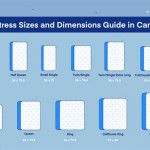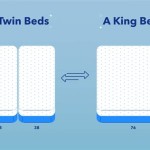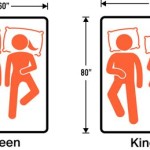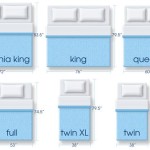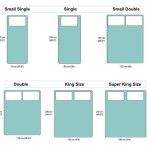What Is Matrimonial Bed Size?
The term "matrimonial bed size" is commonly used to refer to a bed designed to comfortably accommodate two adults. Understanding the specific dimensions associated with this term is crucial when selecting a bed frame, mattress, and bedding. While the label suggests a bed suitable for couples, the actual dimensions can vary depending on geographical location and manufacturer standards. This article delves into the intricacies of matrimonial bed sizes, common dimensions, factors influencing the choice of a matrimonial bed, and related considerations.
Defining precisely what constitutes a "matrimonial bed" can be somewhat ambiguous. Unlike standardized sizing terms like "twin," "full," "queen," or "king," the term "matrimonial" lacks universal consistency. In many regions, especially outside North America, "matrimonial" is frequently used interchangeably with what is known as a "full" or "double" size bed in the United States. Consequently, consumers must exercise caution and verify the exact dimensions of the product before making a purchase.
The use of the term "matrimonial" often reflects cultural and regional preferences in mattress and bed sizing. Its prevalence highlights the importance of considering local market norms when researching and buying bedding. Ignoring these regional variations can lead to purchasing a bed that doesn't meet expectations in terms of size and comfort.
Common Matrimonial Bed Dimensions
While the exact dimensions can vary, a typical understanding of a matrimonial bed size often falls around 54 inches (137 cm) wide and 75 inches (191 cm) long. This size is the same as the "full" or "double" size bed commonly found in the United States. These dimensions offer more space than a twin bed, which is designed for a single sleeper, but less space than a queen-size bed.
The 54-inch width allows two adults to sleep on the bed, although individual space might be limited. This can be a suitable option for couples who prefer a cozy sleeping arrangement or those with smaller bedrooms where a larger queen or king-size bed would be impractical. The 75-inch length is generally sufficient for individuals of average height, but taller individuals might find it less comfortable.
It's important to note that these dimensions represent a general guideline. Mattress manufacturers might have slight variations in their sizing, so it is always recommended to consult the specific product specifications before making a purchasing decision. Checking the precise measurements ensures compatibility with existing bed frames and bedding.
Factors to Consider When Choosing a Matrimonial Bed
Several factors should be taken into account when deciding whether a matrimonial bed (or a "full/double" size bed) is the right choice. These factors encompass room size, sleeping habits, individual body size, and budget constraints.
Room Size: The size of the bedroom is a primary consideration. A matrimonial bed is a good option for smaller bedrooms where a larger bed would overcrowd the space. Ensure there is enough room to move around the bed comfortably and accommodate other furniture items, like nightstands and dressers. Measuring the room before purchasing a bed is crucial to prevent spatial issues.
Sleeping Habits: The sleeping habits of the individuals sharing the bed must also be considered. If one or both sleepers tend to move around a lot during the night, a matrimonial bed might feel cramped. Couples who prefer more personal space might find a larger bed, such as a queen or king, to be a more suitable option.
Individual Body Size: The body size of the sleepers can also impact comfort. If both individuals are relatively small, a matrimonial bed might provide adequate space. However, if one or both individuals are larger, the bed might feel too small, leading to discomfort and disturbed sleep. In such cases, a larger bed size is recommended.
Budget: Matrimonial beds are typically less expensive than queen or king-size beds. For individuals on a budget, a matrimonial bed can be a more affordable option. However, it's essential to balance cost considerations with comfort and space requirements. Investing in a larger bed might be a worthwhile long-term investment for improved sleep quality.
Matrimonial Bed vs. Other Bed Sizes
Understanding how a matrimonial bed compares to other common bed sizes is essential for making an informed decision. This comparison helps clarify the trade-offs associated with each size and aids in selecting the best option based on individual needs and preferences.
Matrimonial vs. Twin: A twin bed (also known as a single bed) is designed for one sleeper and is typically 38 inches wide and 75 inches long. A matrimonial bed offers significantly more width (54 inches) than a twin, making it suitable for two sleepers. However, a twin bed is often preferred for children's rooms, guest rooms with single occupants, or individuals who sleep alone and prefer a smaller bed.
Matrimonial vs. Queen: A queen-size bed is wider and longer than a matrimonial bed, typically measuring 60 inches wide and 80 inches long. This provides more space for couples to sleep comfortably and is often the preferred choice for master bedrooms. The extra width and length of a queen-size bed can make a significant difference in sleep quality, especially for couples who value personal space or are taller than average.
Matrimonial vs. King: A king-size bed is the widest standard bed size, typically measuring 76 inches wide and 80 inches long. This offers ample space for couples to sleep comfortably, even if they move around a lot during the night. A king-size bed is often considered a luxurious option and is best suited for master bedrooms with ample space. However, the added size and cost might not be practical for smaller rooms or individuals on a budget.
Matrimonial vs. California King: The California King bed offers the same surface area as a King bed, but boasts 4 more inches in length and 4 less inches in width. It typically measures 72 inches wide and 84 inches long, making it the longest standard size available. This size of bed can be ideal for taller individuals who enjoy more leg room while they sleep.
Careful consideration of these size comparisons is vital in making the right choice. These comparisons are not absolute, and personal preferences will ultimately dictate the ideal bed size. Evaluate the factors listed above to make the decision best suited to your needs.
In conclusion, understanding the nuances of the "matrimonial bed size" term is key to making a well-informed purchasing decision. Considering the regional variations in terminology, the actual dimensions, and the individual needs and preferences of the sleepers is crucial for selecting the right bed for optimal comfort and sleep quality. Furthermore, comparison of pros and cons of various bed sizes will help ensure the best decision is made for your needs and circumstances.

Bed Sizes In Mexico Cabo Real Estate Services Best Website

What A Crazy World We Sleep In Quepolandia

Bed Sizes In Mexico Cabo Real Estate Services Best Website

Bed Sizes Are Confusing

Mattress Sizes In Spain All

Mattress Sizes And Dimensions In Canada Amerisleep

Dicas Tamanhos De Colchões

Bim Double Matrimonial Bed 1440mm Bimetica
Double Size Bed Cama Matrimonial Model 3d Warehouse

Bed Sheet Sizes And Dimensions Guide Dreamcloud


